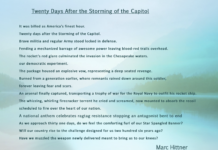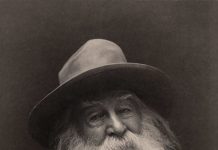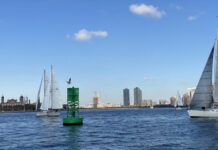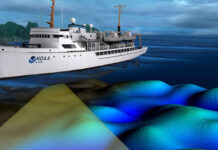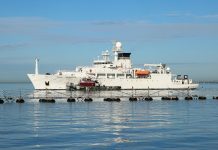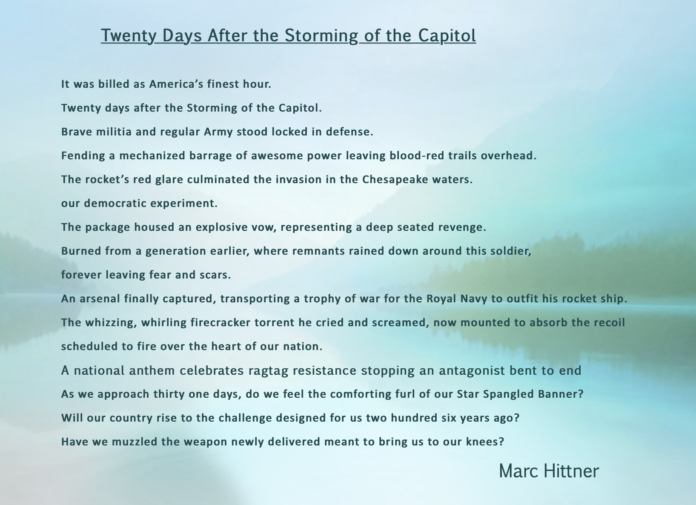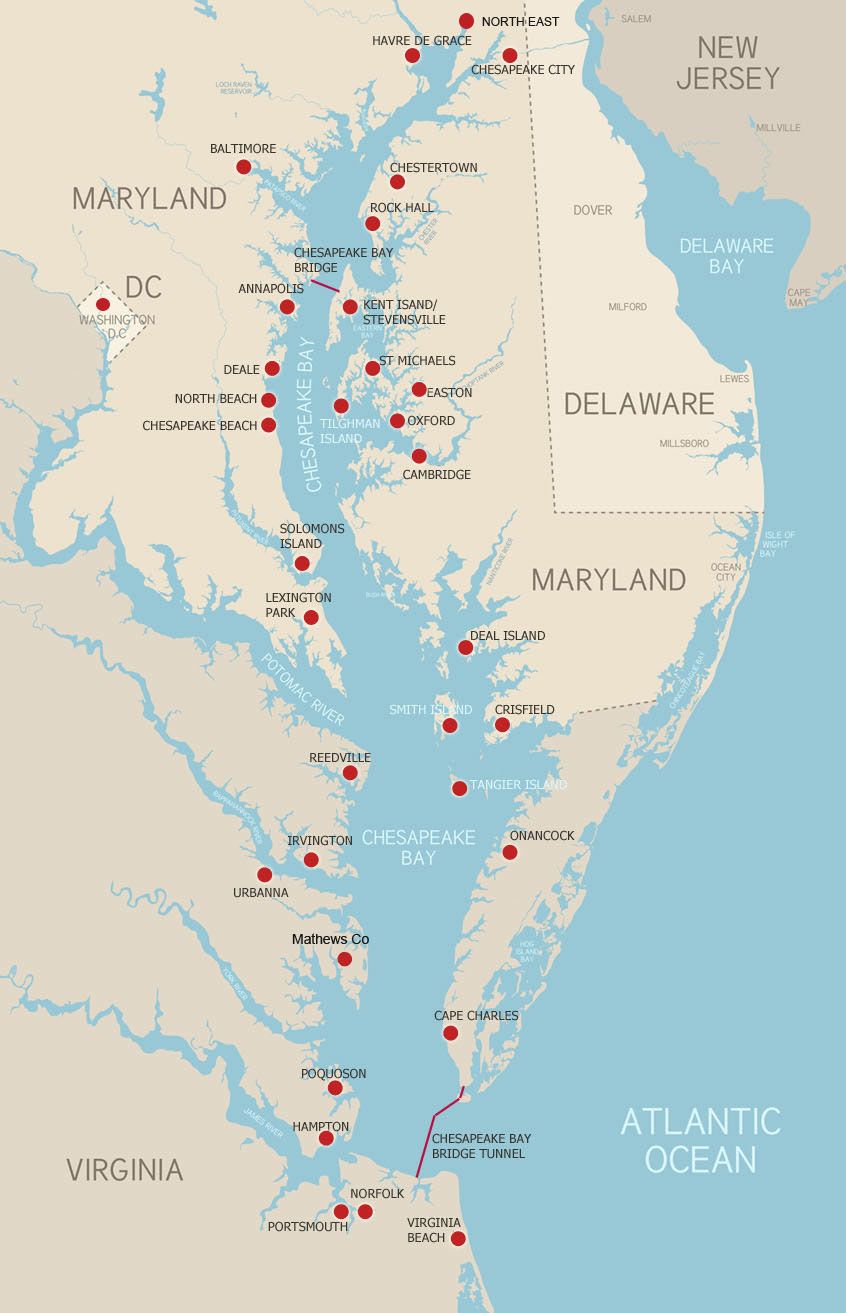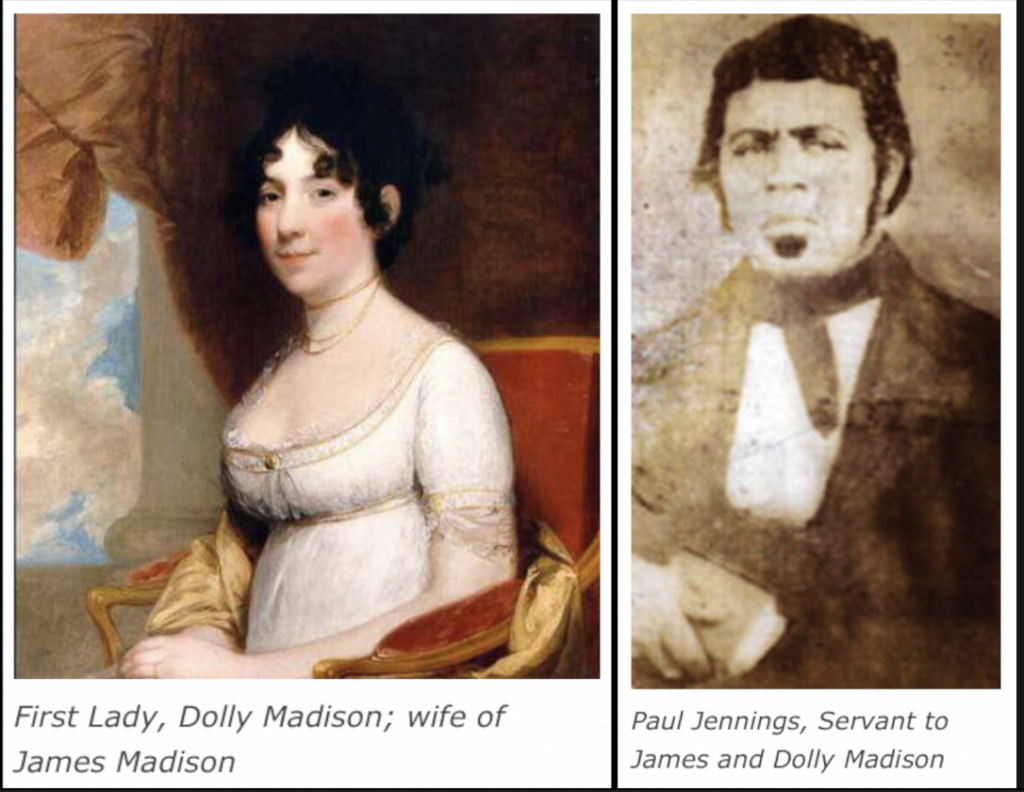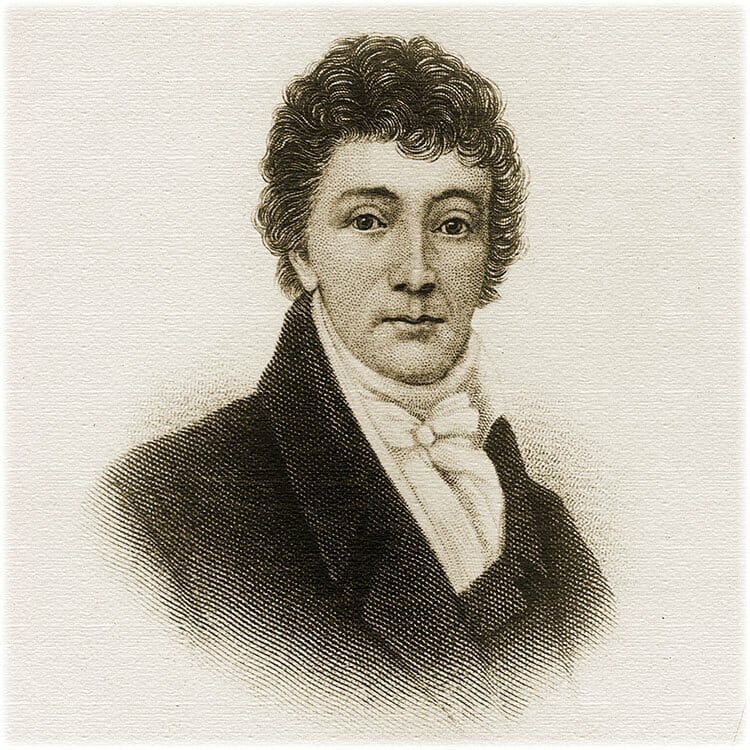Thirty One Days of Terror: The British Invasion of the Chesapeake Bay Region
The burning of our nation’s capitol and the staging area of ‘The Star Spangled Banner’ all happened within 20 days of each other only 50 miles apart.
With the tragic events that occurred at the Capitol Building on January 6th, 2021, it is fitting to trace back to the last time Washington, D.C. was violently attacked. There is much history to pour through to compare similarities, symbolism, and scenarios. Britain’s motivation was a response to America’s declaration of war; however, in my opinion, it may very well have been an act of revenge at the hand of one very influential British aristocrat. Let’s begin our track of the 31 days of this extraordinary saga.
DAY ONE: August 15th, 1814. The British Fleet From Bermuda Arrives off the Maryland Coast.

But the Duke of Wellington, Arthur Wellesley, was anxious to finally unleash his pride and joy on the seat of government of the former British Colonies in America. In addition to frigates and mortar ships, the H.M.S. Erebus was the rocket ship carrying his proprietary weaponry. Wellesley was a hardened military man who fell victim to these very rockets three decades earlier at the hands of Tipu Sultan of India. Wellesley never recovered from the terror that rained down around him over several campaigns to overthrow the Indian Sultan. Wellesley finally defeated Tipu Sultan in 1799 and, as a trophy of war, brought the Asian manufactured arsenal back to Britain. William Congreve harnessed the rocket technology and outfitted it on the Erebus.
There are a few historical fiction books that explore the global climate just prior to the War of 1812. One by Mark Sysson cleverly reveals the balance of power that existed at the dawn of the nineteenth century and how the story culminated in the Chesapeake Bay with The Star Spangled Banner.
DAY TWO: August 16th, 1814. Tangiers Island, Chesapeake Bay
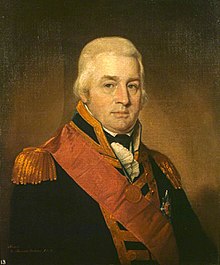
British Vice-Admiral Alexander Cochrane orchestrated the invasion. British blockades were in place up and down the entire U.S. coastline. An attack on the U.S. Capitol was in the works months in advance. Cochrane planned the destruction of the U.S. Capitol along with the surrounding major port cities along the Chesapeake Bay. Cochrane saw the strategic significance of Tangiers Island in the heart if the Chesapeake. For a brief moment in history, it served as important of a naval military center as Halifax, Nova Scotia.
In advance of the attack, Cochrane took advantage of the political tensions that were evident in America. Once again, there were British sympathizers who feared the American experiment was not long for. British agents targeted properties bordering the Chesapeake Bay in Maryland and Virginia. In an attempt to entice local blacks to join the British fight on U.S. soil, Vice Admiral Cochrane formed the Corps of Colonial Marines a year earlier. British loyalists recruited slaves and promised them and their families freedom. Many blacks in the region accepted the offer. The British trained them as equals and the former slaves received pay, uniforms, and the promise of a pension. They became Britain’s newest mercenaries.
According to local Chesapeake folklore musician and chronicler, Janie Meneely, there was a Methodist parson named Joshua Thomas who lived on Tangiers Island when the British took residence. It seems the British welcomed Parson Thomas’s ministry and attended his sermons. It is noted that Thomas, who was patriotically American, was not muzzled and predicted the failed British Campaign in the Chesapeake. With that, Vice Admiral Cochrane and his officers went off prepared to board their vessels the next day, ready to perform their God-given work and face their fate
DAY THREE: August 17th, 1814. Ships Enter the Mouth of the Potomac and Patuxent Rivers.
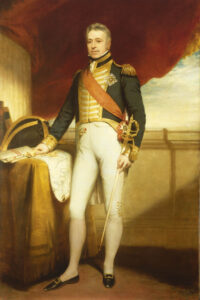
As Admiral George Cockburn returned to his squadron near Taylor Island, Maryland, his officers were busy interacting with the local Americans. Commandeering local vessels and provisions were a priority order. Those who protested were taken along with their assets.
On one of her assignments for her publication in the 1980s, Janie Meneely interviewed the Radcliffe family who had many family stories tied to the War of 1812. Most famously was the tale of their Grandma Polly. It seems Polly’s husband was taken prisoner when Admiral Cockburn’s troops appropriated his boat and provisions. Polly was determined to row out to Cockburn’s ship and speak to the Admiral directly. Cockburn was so impressed with Polly’s decisiveness and courage, he immediately released her husband right after tea. Janie Meneely’s poem is a wonderful celebration of the working Chesapeake Bay community and her most recent collection of music is found in her songbook, Sing The Bay Fantastic.
The first phase was to have a squadron of mortar vessels led by British Captain Alexander Gordon take his invasion force up the Potomac River. Lack of navigation knowledge of the local waters played an essential outcome of preventing a British victory. Shallow places like those local American mariners called ‘Kettle Bottom’ would be key in frustrating the British squadrons. Meanwhile, Sir. George Cockburn and General Robert Ross land 5,000 troops at Benedict, Maryland on the Patuxent River.
DAY FIVE: August 19th, 1814. British Navy Lands at Benedict, Maryland on the Patuxent River.
DAY NINE: August 23rd, 1814. North to Baltimore or West to Washington
The future 5th President, James Monroe, acted as a scout to detect the landing and thwart the advance of Admiral Cochrane’s campaign. Meanwhile, back on the Potomac, British Captain Gordon’s mortar bombardment squadron found a scanty presence of a garrison manning Fort Washington approximately 50 miles downriver from the U.S. Capitol.
President Madison was almost shot by the British as it was reported he rode aimlessly through the countryside on horseback attempting to organize defenses. At a critical juncture, British General Ross’s intentions confused the American forces. It was unknown which direction the British troops were going to march.
Baltimore was in range to the north where Britain’s dreaded American foes, the Privateers, called home. Privateer maritime operations on open waters maneuvered regularly from the Chesapeake, stealthily breaking the blockades and plundering British ships in the Mid-Atlantic. In addition, Baltimore was known as a vital shipbuilding center where America’s future frigate fleet was under construction. Therefore, Baltimore was a choice target.
DAY TEN: August 24th, 1814. The Battle of Blandensburg
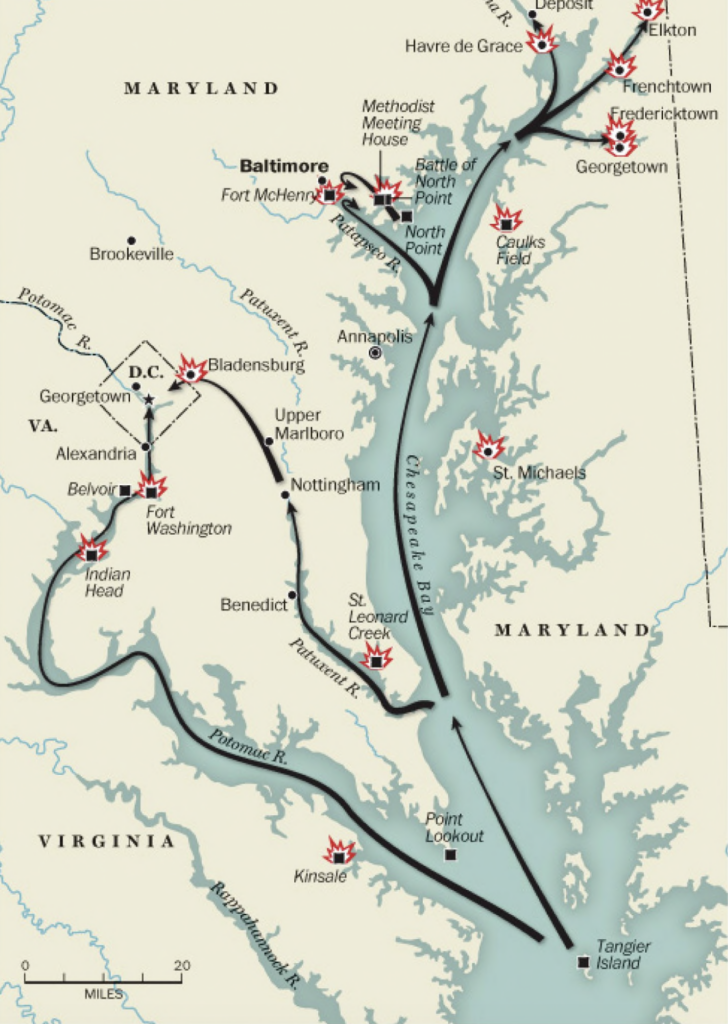
As Cockburn and Ross stood eight miles northeast of Washington, D.C. the British advance met the first organized U.S. militia in the campaign. Maryland slave-owners must have been shocked to see their runaway slaves return in British uniform with muskets aimed waiting for the order to open fire. However, other blacks refused the British offer of freedom and remained on the side of America.
The Battle of Blandensburg did not last long. The U.S. forces quickly disbanded when the casualties became heavy. The British easily won and turned to the west marching unimpeded to the nation’s Capitol. After the Chesapeake campaign, the British kept their word and the blacks were transported to Halifax, Nova Scotia where they started their new life.
The paltry response of local militia paled in comparison to the bravery of Dolly Madison’s heroic actions, with the help of her 15 year old enslaved servant Paul Jennings to sneak the life-size portrait of George Washington out of the Presidential Mansion. Absence of any organized U.S. force remains a stunning fact with the only plausible military explanation was that the British would not waste their time attacking Washington, D.C. because it had no tactical value. Instead, all attention, troops, and weaponry was directed to the defense of Baltimore instead.
DAY ELEVEN. August 25th, 1814. The 26 Hour Occupation of Washington, D.C.
Cockburn’s short list of targeted buildings included the U.S. Capitol, the Library of Congress, and the Presidential Mansion. As the buildings burned, George Cockburn was shrewd enough to enter the city’s most popular newspaper office and destroyed or removed every letter C in the building. The American newspaper would not be able to print neither his name or Vice-Admiral Cochrane’s name properly as the perpetrators of the historic attack. Both of them were already subject of harsh ridicule in all the local American newspapers.
The British mortar ships and the H.M.S. Erasmus never made it up the Potomac to shell and rocket Washington, D.C. but they were certainly within striking distance of Alexandria, Virginia. Seeing the U.S. Capitol ablaze from across the Potomac, a delegation representing the citizens of Alexandria offered their surrender of the city to the British. Cockburn was surprised by the news Captain Gordon’s squadron was well south of their destination. The naval bombardment of Washington never happened. Wellesley’s rockets never flew over the capitol.
DAY TWELVE: August 26th, 1814. PRESIDENT MADISON APPOINTS FRANCIS SCOTT KEY TO ARRANGE A PRISONER RELEASE WITH THE BRITISH
DAY FIFTEEN: August 29th, 1814. THE FALL OF FORT WASHINGTON
DAY EIGHTEEN: September 1st,1814. SHALLOW WATER ONCE AGAIN
DAY TWENTY: September 3rd, 1814. THE BRITISH PULLBACK ON THE POTOMAC
The British mortar ship, Devastation, was grounded in the shallows of the Potomac. U.S. gunboats unsuccessfully attempted to capture the ship as the rest of the British squadron propelled the attack. The skirmishes lasted for another 3-4 days. Erebus suffered the single death of a British seaman although there were reports of at least a dozen more with shrapnel wounds.
DAY TWENTY SEVEN: September 10th, 1814 THE EMERGENCE OF MAJOR ARMISTEAD
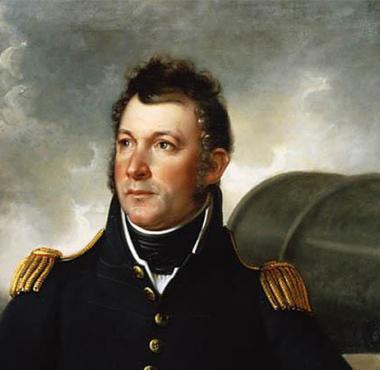
Twelve British sailing ships were spotted off Annapolis, Maryland that confirmed the all-out assault of Baltimore. Additional American scouting parties reported smaller craft well up the Chesapeake Bay heading toward Baltimore. Local city and state militias were fortified with federal regular Army troops. Major George Armistead served as a commander the previous year at Fort Niagara where he defeated the British thereby allowing the Americans to enter Canada. President Madison ordered Armistead to take command of Fort McHenry. Knowing the inevitability of the naval attack, he reinforced gun positions around the harbor and along the Chesapeake.
DAY TWENTY NINE: September 12th, 1814 THE BATTLE OF NORTH POINT
DAY THIRTY: September 13th, 1814 THE STAGE IS SET AT FORT MCHENRY
The Beginning of the 26 Hour Bombardment.
DAY THIRTY ONE: September 14th, 1814. THE MARYLAND MILITIA AWAITS THE SILENT OARS
The British amassed one last fail-safe plan that was devised well in advance. A landing attack of 3 bayonette regiments where Commodore Cochrane, aboard his H.M.S. Surprise, initiated a diversion to cover the ground attack on Baltimore. An assembled fleet of rowboats and barges that would stealthily oar up the Patapsco Ferry Branch.
EPILOGUE
Back in Great Britain, Arthur Wellesley would learn that his rocket hellfire that won him fame in the Anglo-Russian War in the Baltic and the victory in Algiers over Napoleon failed in the Battle of Baltimore.
Within months, Washington, D.C. began restoration of the burned buildings. The scorch marks on the walls of the Presidential mansion were quickly covered with white paint. This renovation gave the mansion its familiar appearance that is known from that day forth as The White House.
The ‘Star Spangled Banner’ remains America’s national anthem and foremost hymn sung at every major venue and public event.
AD:
Custom progamming, database and system support
Best custom computer programming, database and system work. https://custom-software-usa.com Custom Software USA


